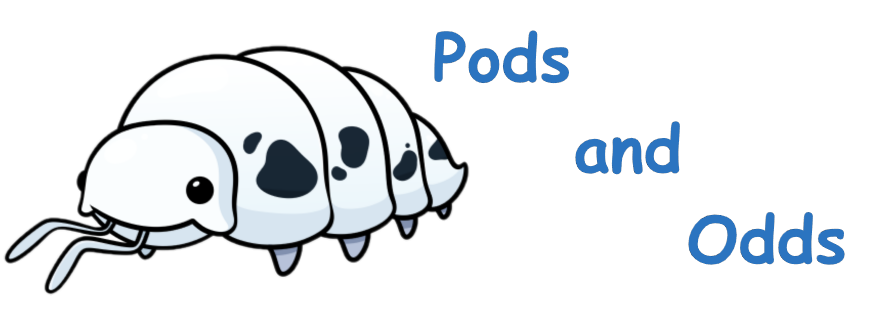Isopod FAQs
Porcellionides pruinosus
Porcellionides pruinosus is a fast moving medium-sized isopod native to the British Isles. While they enjoy the occasional protein source, they are less protein hungry than larger Porcellio species which makes them safe for inclusion in the clean-up crew of a bioactive vivarium. Unlike Armadillidium species, Porcellionides pruinosus cannot roll into a ball and instead relies on their speed to escape from predators. Fortunately, due to their medium size, Porcellionides pruinosus can often evade the attention of larger reptiles (but may be a tasty treat for medium sized reptiles capable of catching them).
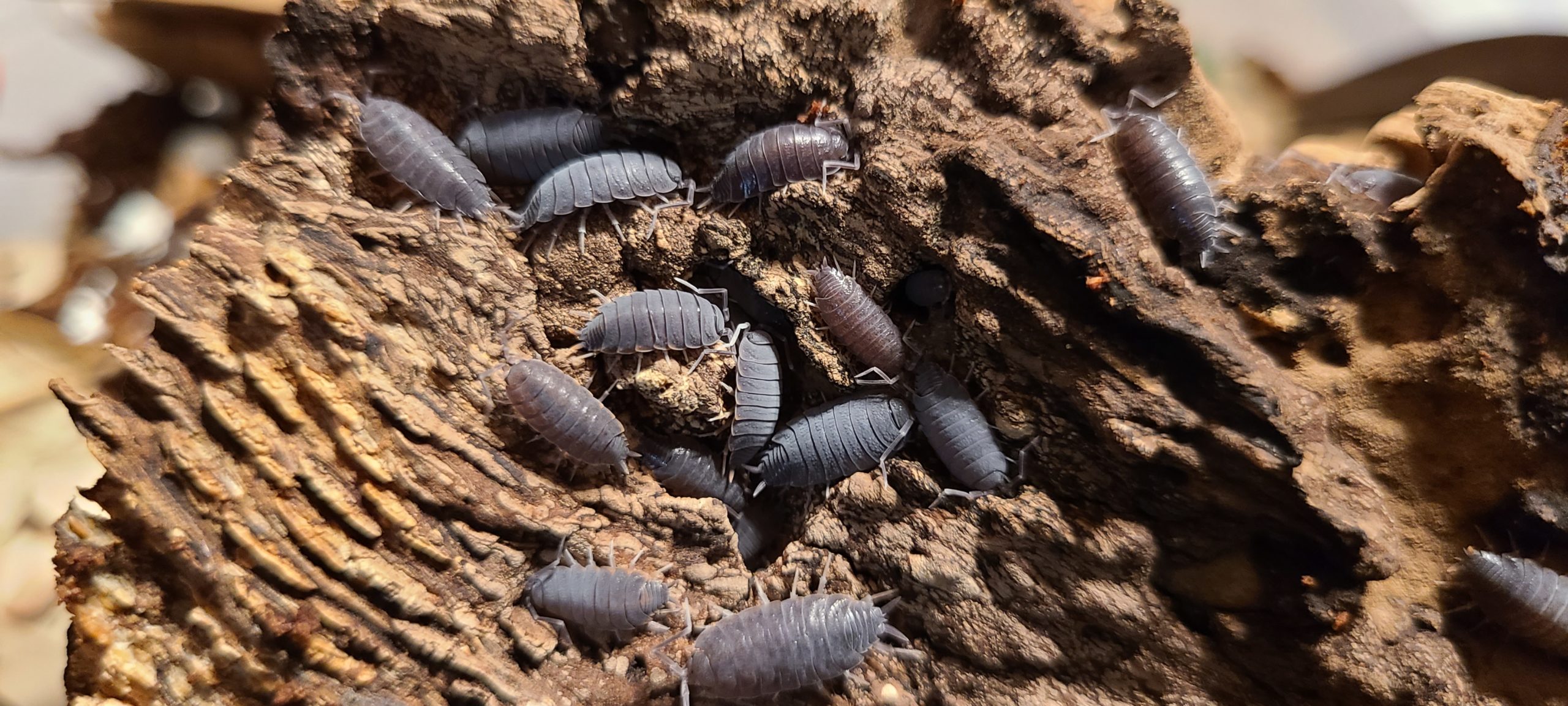
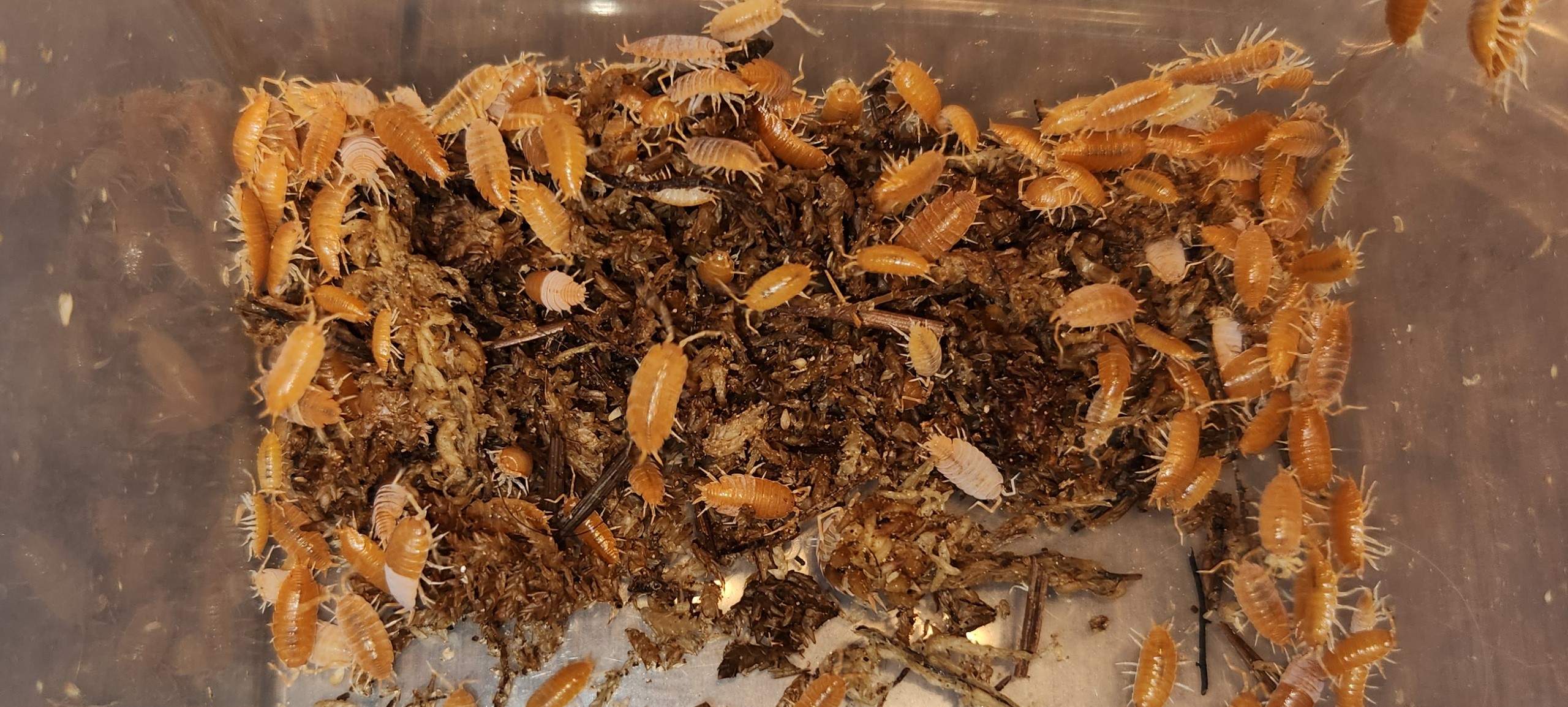
| Morph | Count | Price |
|---|---|---|
| Powder Blue | 10 | $15 |
| Powder Orange | 10 | $15 |
| Oreo Crumble | 10 | Sold Out |
| Orange Cream | 10 | Sold Out |
Porcellio scaber
Porcellio scaber is a large isopod native to Western and Central Europe. While they are a fairly protein hungry species, they are not as aggressive in their pursuit of protein as Porcellio laevis and are generally safe for use as part of a clean-up crew. In fact, Porcellio scaber holds the record for the species with the longest history of captivity and is one of the oldest species used in bioactive clean-up crews. Like other Porcellio and Porcellionides species, Porcellio scaber does not roll up into a ball for defense. While they lack the speed of Porcellionides pruinosus, their larger size can ward off predation from small reptiles and amphibians. On the other hand, Porcellio scaber can grow large enough to attract the attention of medium sized pets who may enjoy them as a delicacy. Like all isopods, Porcellio scaber require access to moisture in order to rehydrate their pleopodal lungs, but they are generally more tolerant of dryer environments than other species.
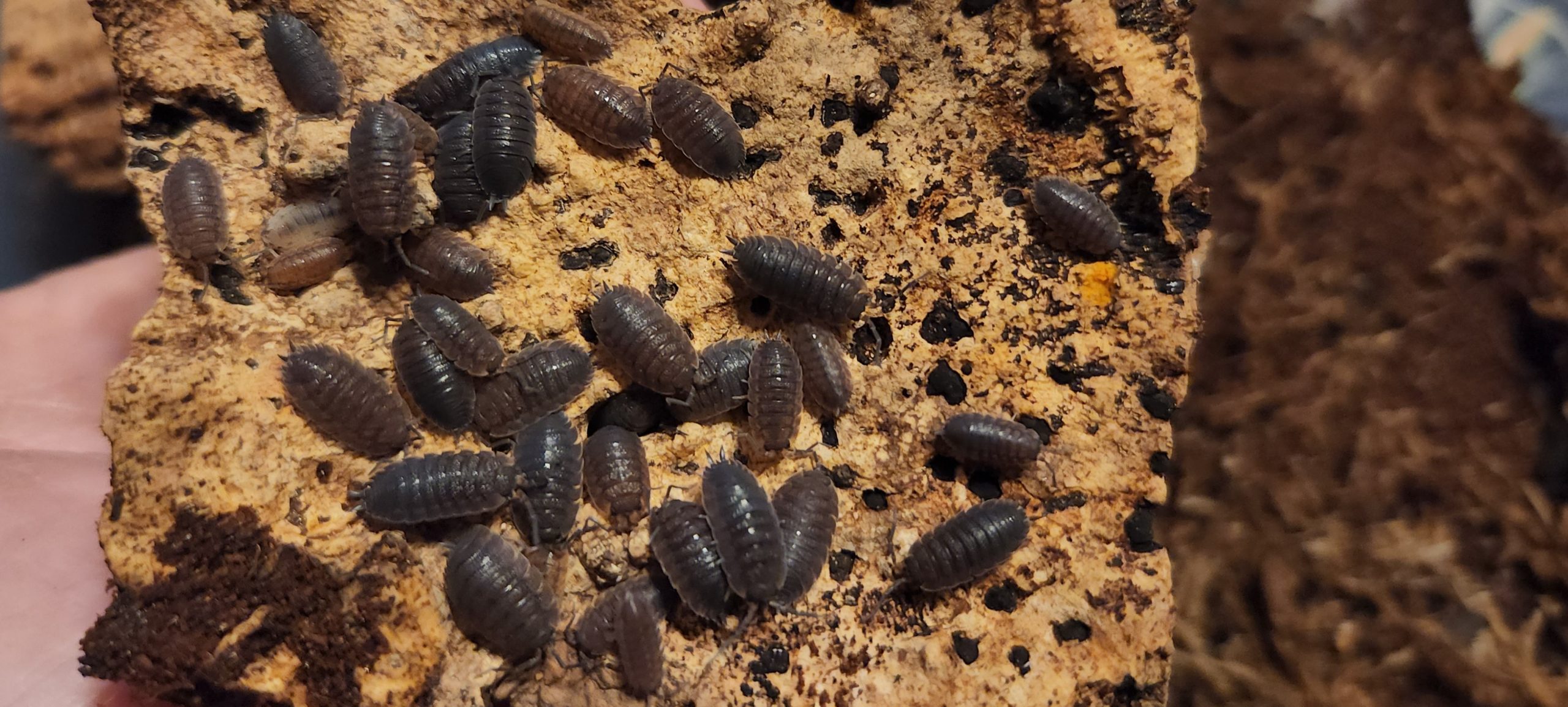
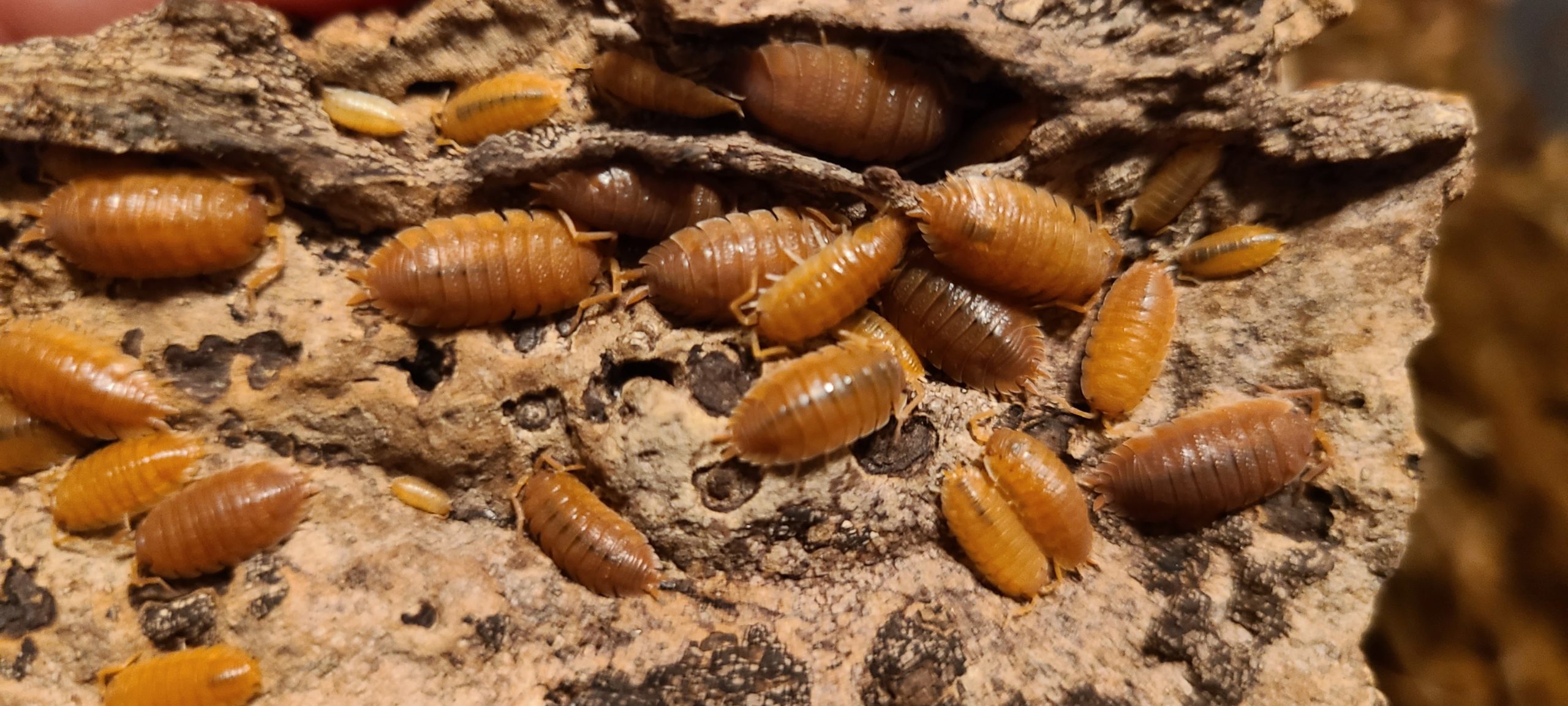
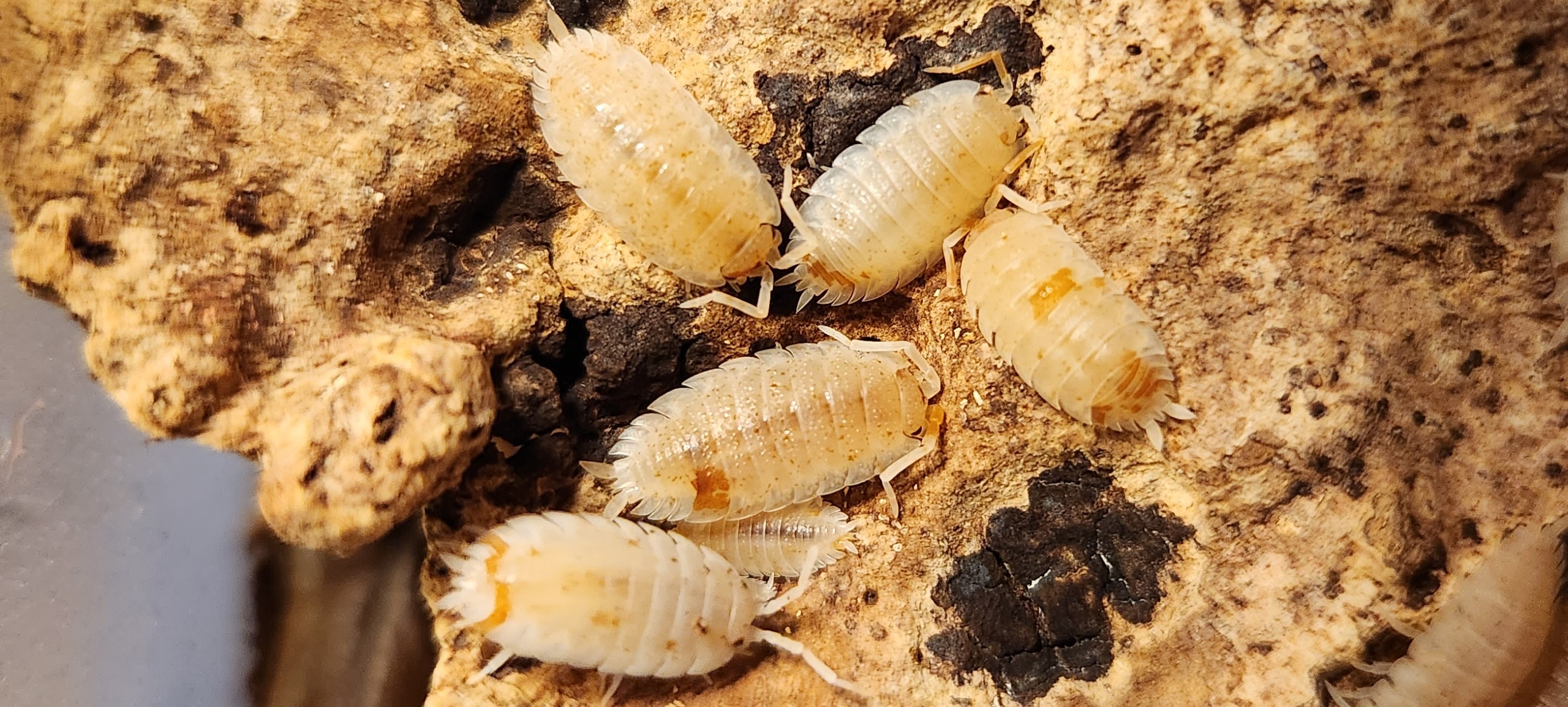
| Morph | Count | Price |
|---|---|---|
| Wild Type | 10 | $10 |
| Spanish Orange | 10 | $15 |
| Orange Dalmatian | 10 | $20 |
Porcellio laevis
Porcellio laevis is a large isopod first recorded in 13th century Britain. Despite it's oldest documented appearances being in Europe, several biologists have suggested that Porcellio laevis may have originated in North Africa due to distinctive characteristics found in North African Porcellio species. Slightly larger and far hungrier than Porcellio scaber, Porcellio laevis is the first and (so far) only isopod species that we do not recommend for inclusion in a clean-up crew. While some herpetologists use Porcellio laevis with no negative results, others have reported that this species (and particularly the Dairy Cow morph) have been found nibbling on soft-skinned reptiles and amphibians. While we don't recommend them for clean-up crews, Porcellio laevis make great standalone pets due to their large size, tolerance to lighting conditions, and their feeding response when provided with protein sources like dehydrated chicken.
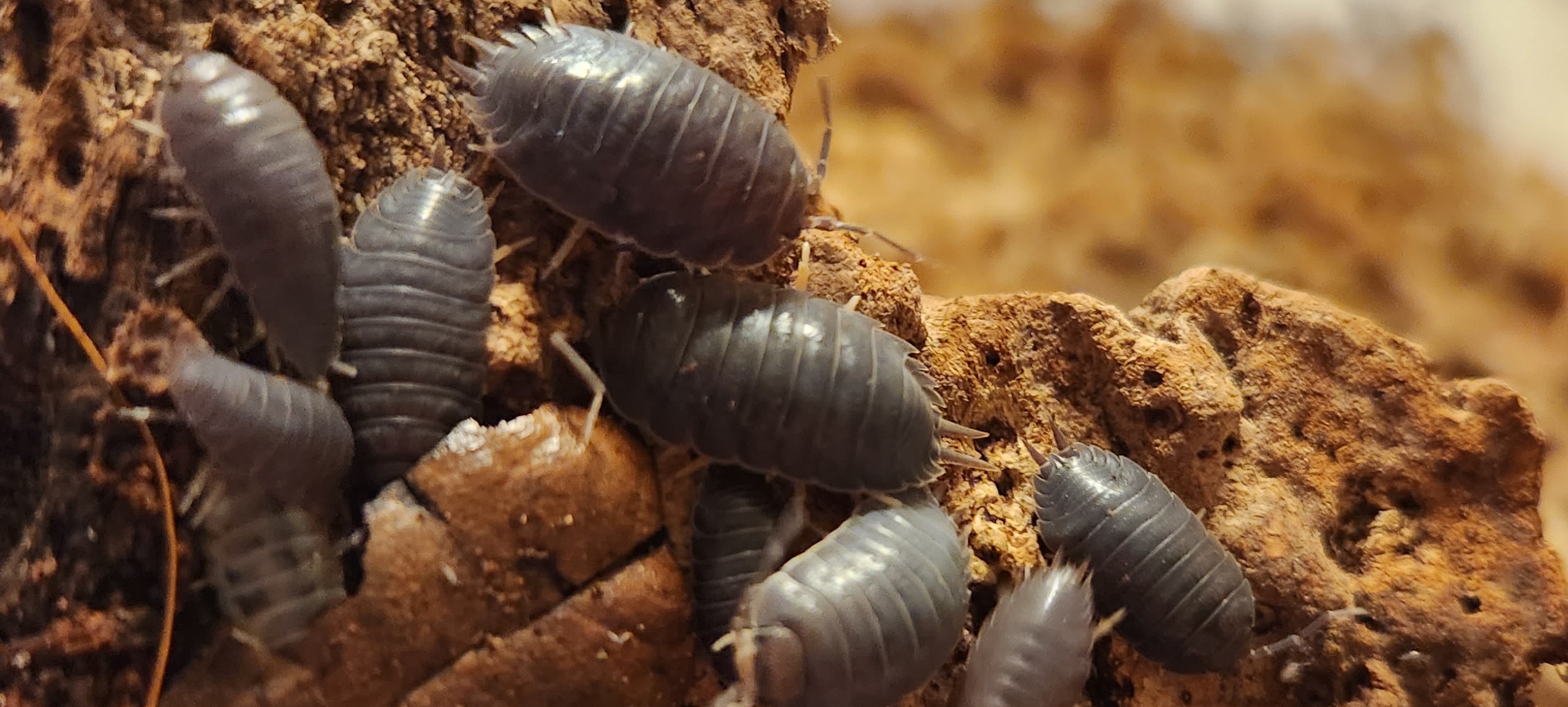
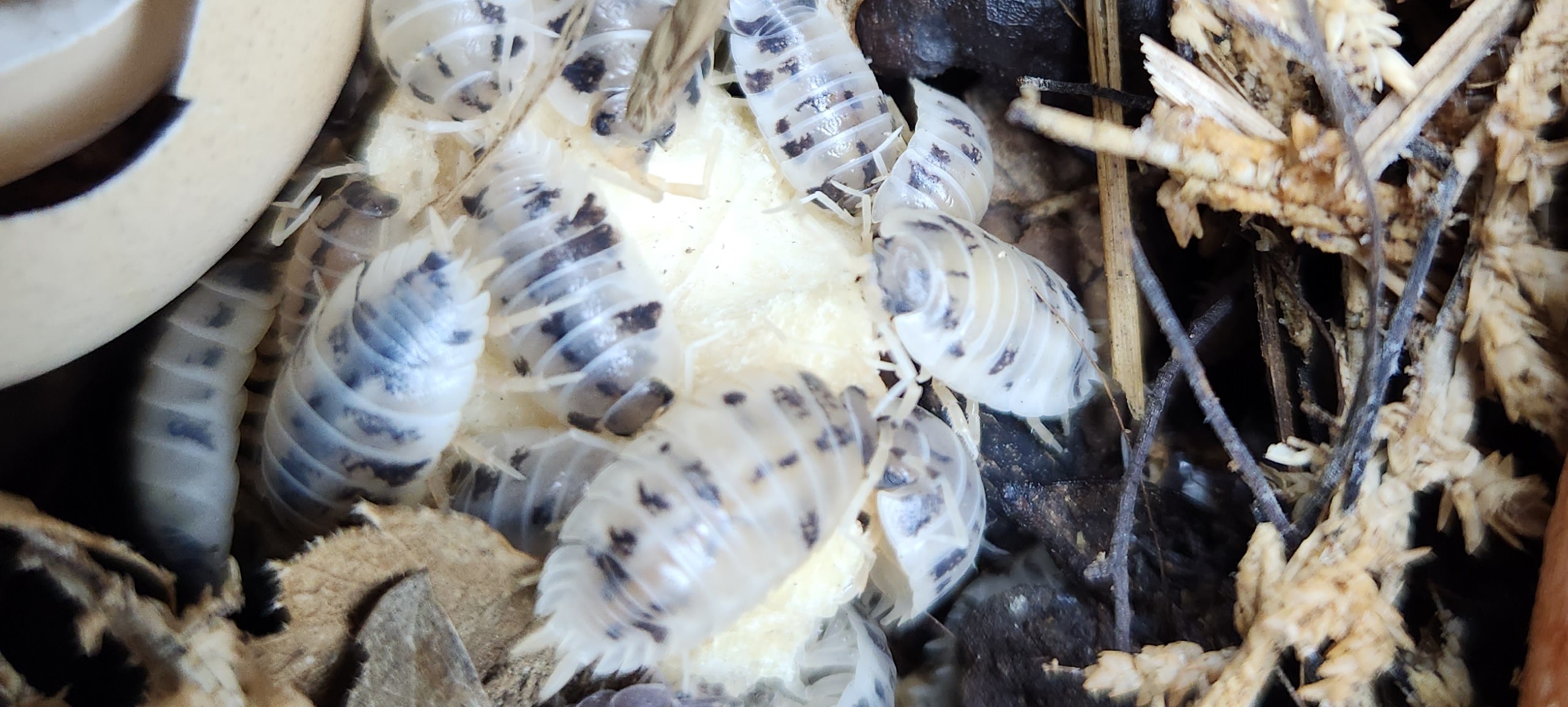
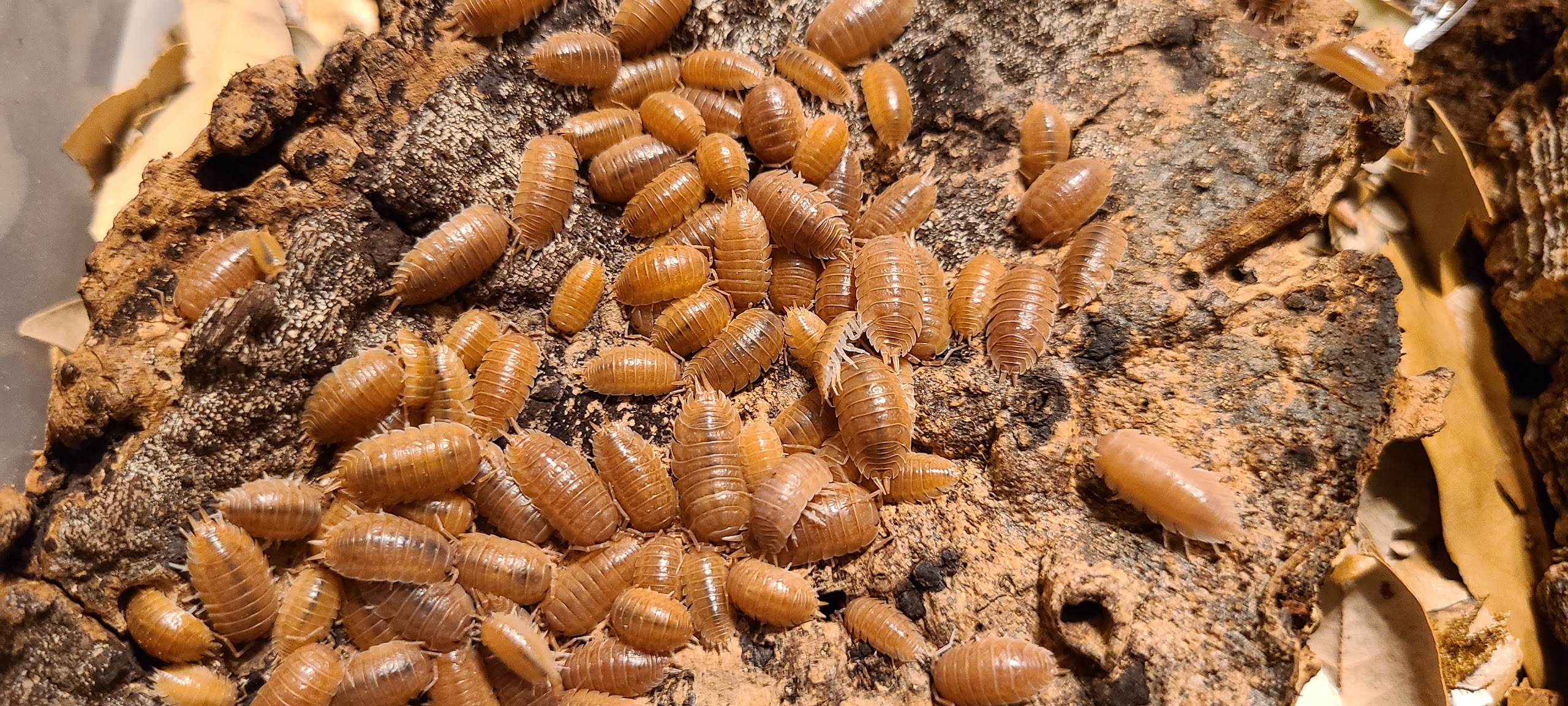
| Morph | Count | Price |
|---|---|---|
| Wild Type | 10 | $10 |
| Dairy Cow | 10 | $15 |
| Orange | 10 | $20 |
Oniscus asellus
Oniscus asellus is large isopod with a rather unfortunate name. From Greek, the name "Oniscus" means "little donkey" while "asellus" in Latin means (you guessed it) "little donkey". Despite their rather silly name, Oniscus asellus is quite wide spread throughout Western Europe and thrives particularly well wetland ecosystems. Although not aquatic like their ancestors, Oniscus asellus is more tolerant of moist conditions than many other species of isopod. Since they do not display the aggressiveness of similarly size Porcellio species, Oniscus asellus can serve nicely as a member of a clean-up crew and due to their slightly out-turned segments, this species can sometimes ward off predators that would otherwise snack on them.
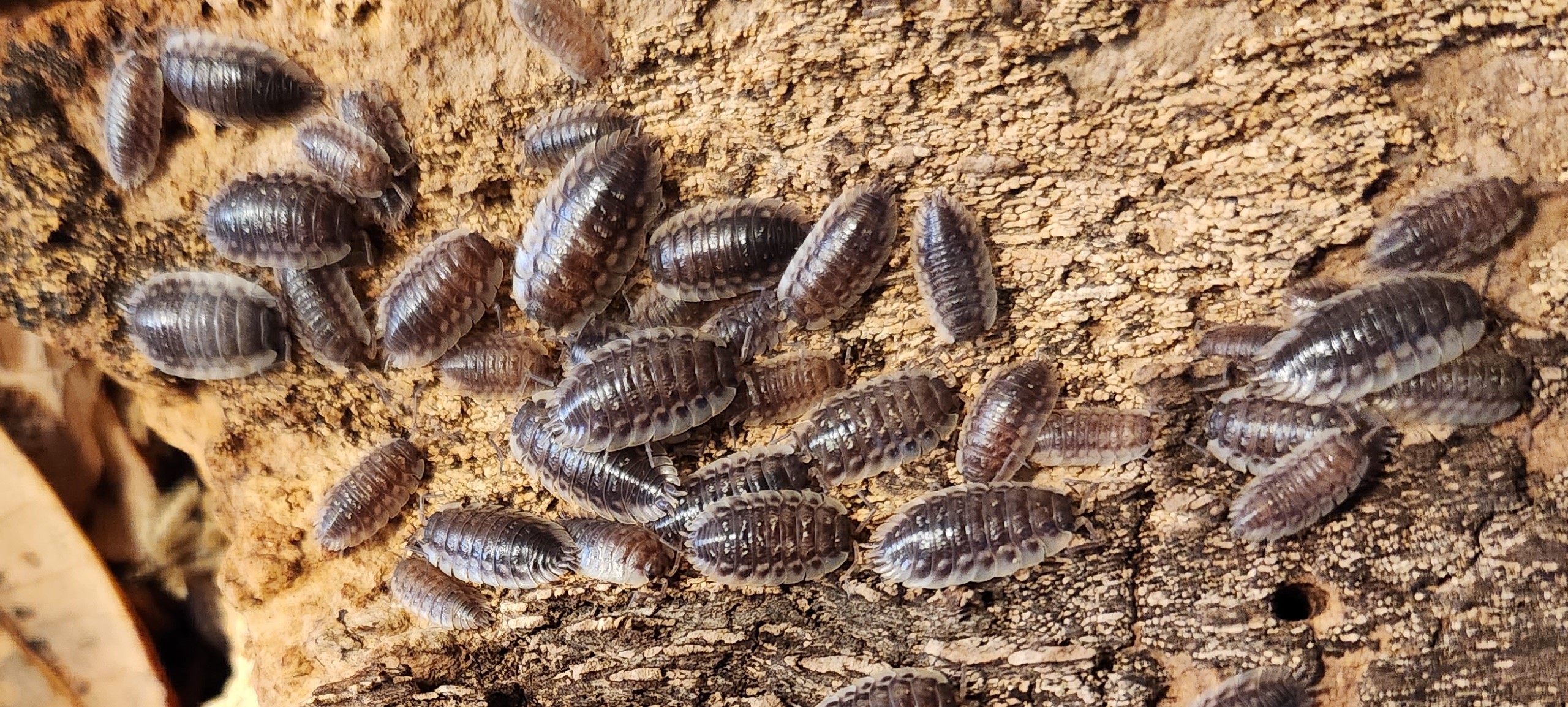
| Morph | Count | Price |
|---|---|---|
| Wild Type | 10 | $15 |

